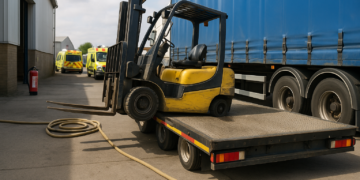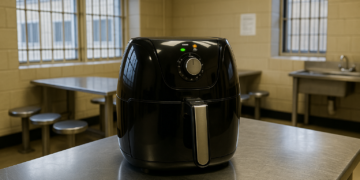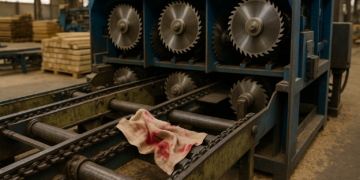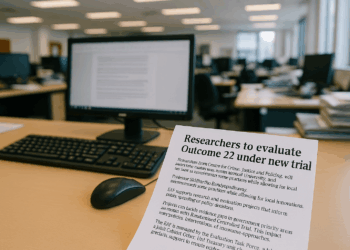Story Highlight
– Explosives are stable and safe in final product form.
– Raw materials for explosives are highly volatile and dangerous.
– Stabilisers are added to enhance explosive safety.
– Examples include nitrous cellulose and Trinitrotoluene (TNT).
– Modern manufacturing standards ensure fewer explosive incidents.
Full Story
Explosives are often perceived as hazardous substances, yet recent insights from experts suggest that they are considerably safer once they are processed. Dr. Chris Shepherd, a distinguished academic at the University of Kent, provided an in-depth analysis of the stability of explosives post-manufacturing, challenging common misconceptions about their danger levels.
According to Dr. Shepherd, the risks associated with explosives are primarily linked to their raw materials before they are transformed into a final product. He notes that once explosives take their intended form, they become remarkably stable and can be handled safely. “Once explosives are formed into their final product, they’re actually very stable and very safe,” he remarked.
Dr. Shepherd elaborated on the manufacturing process of explosives, illuminating how they are made safer through the addition of various components during production. “We take the very sensitive, volatile explosives and we add lots of things to it, that we often refer to as stabilisers,” he explained. This sophisticated process ensures that the finished explosives can be stored securely for extended periods, sometimes spanning decades, without incident.
Citing specific examples, Dr. Shepherd pointed out that substances like nitrocellulose and Trinitrotoluene (TNT) exemplify the safety of manufactured explosives. He stated that once these materials are processed, they exhibit a high degree of resistance to heat and flames. “It takes a lot to make these things detonate and explode,” he asserted, further emphasising the safety measures embedded in modern explosive production.
Despite the potential dangers of raw explosive materials, Dr. Shepherd is not aware of numerous incidents arising from the manufacturing and storage of stabilised explosives. He attributes this to stringent safety regulations that have been established globally. “Modern manufacturing standards in all countries are very strict these days,” he remarked, suggesting that adherence to these regulations contributes significantly to reducing risks.
The conversation around explosives, particularly regarding their safety following manufacture, remains relevant as incidents involving explosives—particularly in military contexts or through misuse—occasionally garner public attention. Dr. Shepherd’s insights provide a reassuring perspective on the subject, particularly for communities living near facilities that produce or store explosives.
As nations strive to enhance safety measures and manufacturing protocols for explosives, the role of academic research and expertise—such as that provided by Dr. Shepherd—is vital in shaping the dialogue around risk management and industry standards. His observations underline the crucial distinction between raw explosive materials and their final forms, which are engineered specifically to mitigate hazards and ensure public safety.
With incidents involving explosives often sensationalised in media coverage, expert voices like Dr. Shepherd’s are essential to convey a balanced understanding of the subject. They help in distancing public perception from misconceptions caused by isolated incidents or catastrophic events involving explosives.
In light of ongoing developments in explosive manufacturing technologies, there is a growing need for education about the products and their handling among the general public, law enforcement, and military personnel. Advances in stabilisation techniques and risk management may further reshape the industry, leading to more reliable and secure explosive materials.
In conclusion, understanding the complexities of explosive safety from production through to storage can alleviate fears and foster a more informed discussion. The efforts by experts in the field not only enhance the safety protocols but also reassure communities that modern practices in explosive manufacturing are built on a framework prioritising safety and stability. As Dr. Shepherd aptly summarises, the careful processes in place have cultivated an environment where explosives, when properly handled, can be a reliable component in various industries rather than a source of widespread concern.
Key Takeaways
– Dr. Chris Shepherd from the University of Kent emphasizes that explosives are safe once formed into final products.
– Explosives consist of sensitive raw materials that are stabilized with additives.
– Final products like nitrous cellulose and TNT can be stored safely for years or decades.
– Raw explosives are dangerous but stable and resistant to heat and flames in their final form.
– Incidents involving explosives are rare due to strict modern manufacturing standards globally.























This clarity is welcome. Emphasising the difference between raw precursors and finished mabilites helps reduce unnecessary alarm and supports informed community dialogue. Strong manufacturing standards, stabilisation processes and robust storage and handling procedures are essential to keeping risks low. Ongoing education for staff, emergency services and local residents, plus transparent reporting of safety performance, will help maintain trust as production technologies advance.
It is important to recognise the distinction between raw precursors and finished explosive products. Properly stabilised materials manufactured to recognised standards are far less likely to deteriorate or react unexpectedly than their constituent components. Strong regulatory oversight, rigorous quality control and thorough worker training are essential to maintain that safety record. Clear communication with nearby communities about controls in place and emergency arrangements helps build trust and reduces fear based on misunderstanding. Continuous review of procedures and investment in safety culture should remain priorities as manufacturing methods develop.
This is a helpful clarification. It is important for people to understand that the risks are not the same at every stage of the lifecycle. Raw precursor materials can be unstable and require strict controls during handling and processing, whereas properly formulated and stabilised final products are designed for safe storage and transport. Maintaining robust regulatory standards, rigorous factory controls and regular independent inspections is essential to keep incident rates low. Clear communication with local communities and ongoing education for workers and emergency services help build trust and ensure everyone knows the correct precautions and response measures.